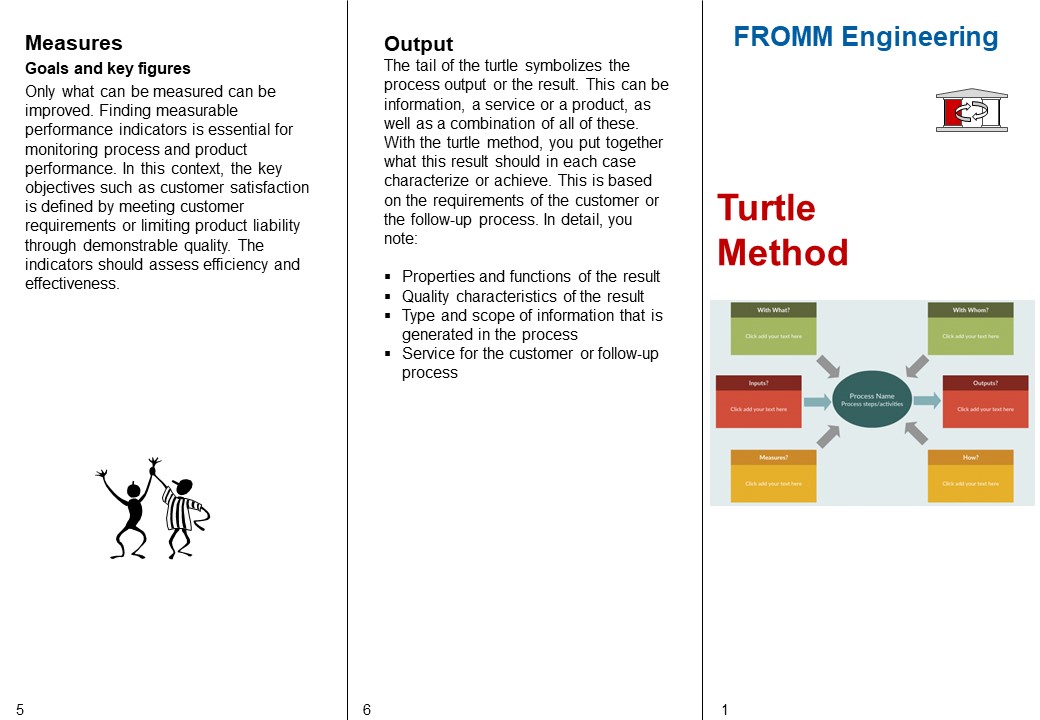Turtle Method

The turtle method for process description and process analysis can serve several purposes. The company can use it to prepare for a quality audit by identifying the weak points of the processes, recognizing risks and developing solutions. This becomes transparent and assessable for the auditor. The turtle diagram is therefore mostly a component of internal and external audits.
At the same time, risks become visible in the process. Examples are: resources are too little planned; there is no clear process responsibility, so errors are not recognized; important input information is missing or is delivered too late; Methods and tools are not adequate to produce the desired process output.
The interfaces between two processes or process steps are clarified with the turtle diagram. Because the output of one process is the input of the other, subsequent process. The turtle diagram shows when interfaces do not work smoothly and important information is lost.
In addition, the goals to be achieved with the process are specified in the turtle diagram. Whether this succeeds is shown by key figures derived from the goals. This makes the performance of the process and possible performance deficits visible.
The turtle method is an important and helpful tool for improving processes and increasing internal and external customer satisfaction.